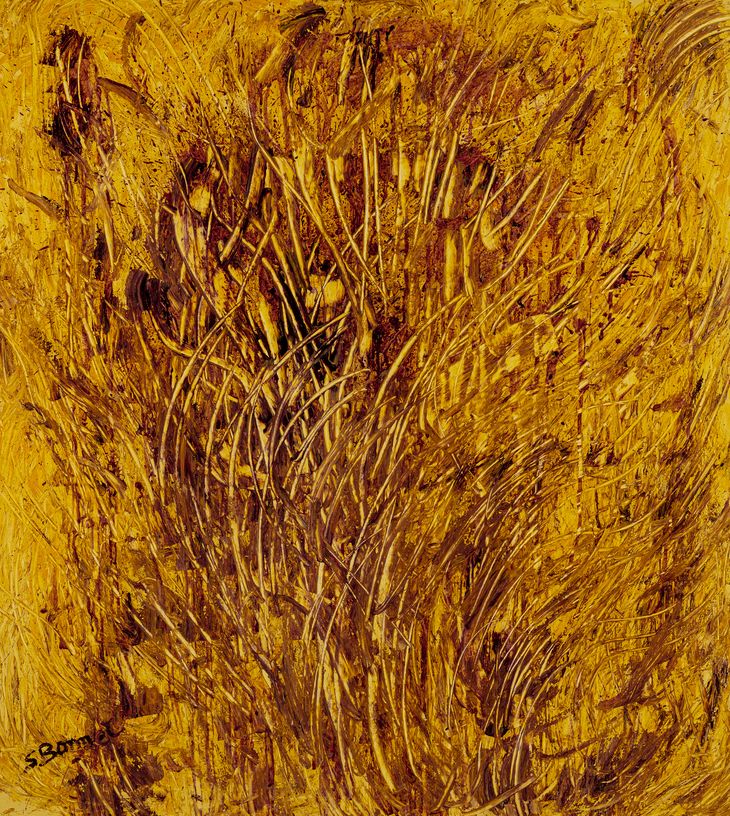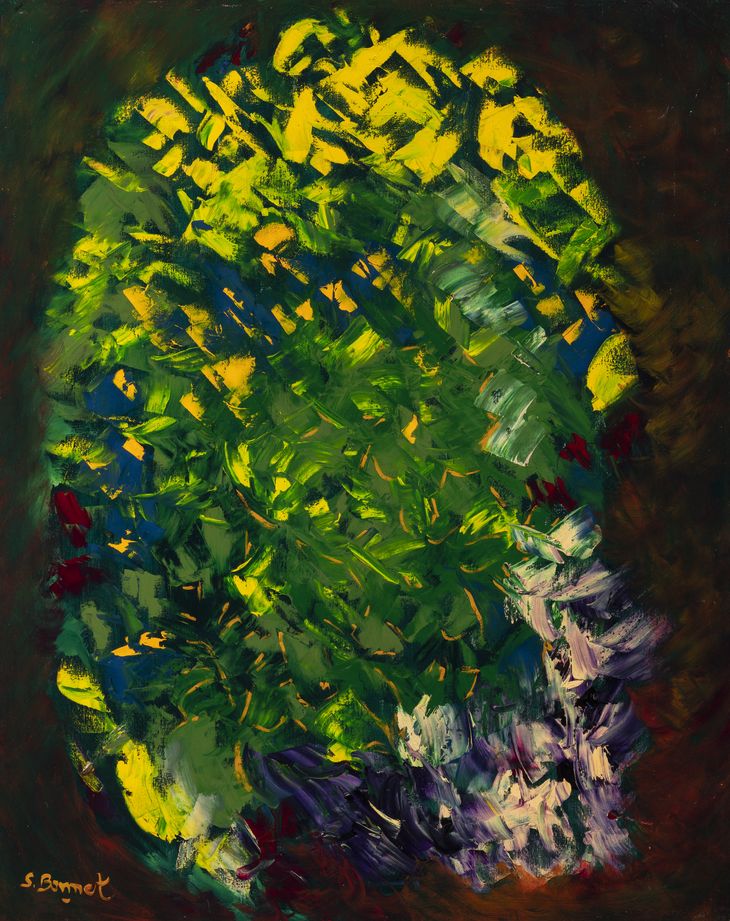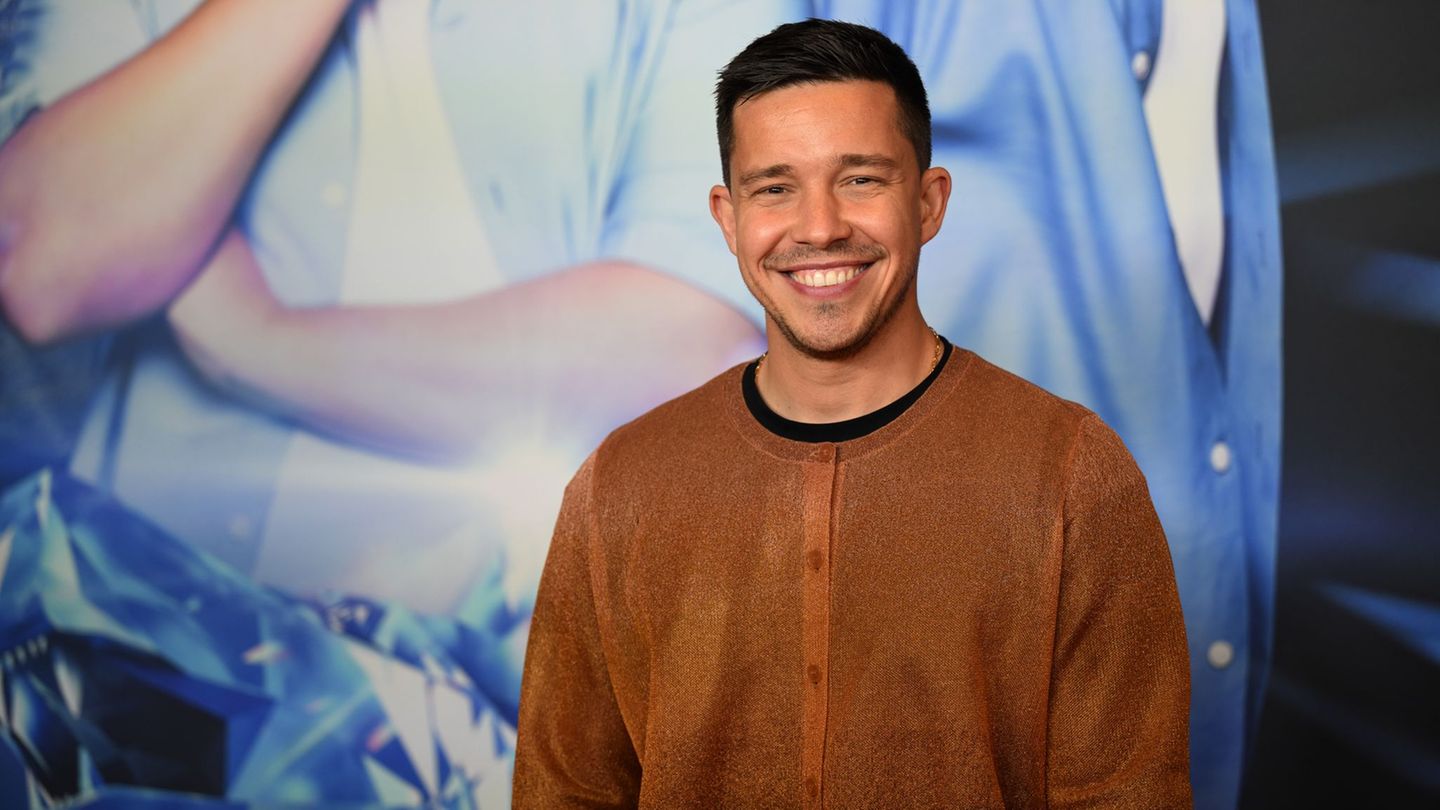Journalist: How do you describe this exhibition?
Susana Bonnet: It occupies two rooms, and its contents are very different. One presents a photographic Artist’s Book that I made during the pandemic. I live in Saavedra, in an old recycled house, in the upper part of which is my atelier and a balcony. During those terrible days, I took photos around 10 in the morning, and reflected what was happening in the neighborhood through a tree.
P.: The tree as a point of focus.
SB: Exact. Just as the pandemic transformed us all, that tree also transformed: it went through the winter, it began to have buds; Life happened to him just like the neighbors. I saw life through the fork of the tree. I took around 300 photographs, of which 30 remained in the Artist’s Book.
Q: As if it were a movie, but with a still photo.
SB: That’s how it is. You see things like a neighbor walking with a Dalmatian sweatshirt and carrying a Dalmatian dog, or some kids running with their masks on as if they were a scarf. Also in that room there are some pastels, works with Chinese ink, and a work with a non-traditional support: it is made in a music box that I intervened, and the music it contains was composed by my husband, a work for six instruments. You just have to open the box and start listening. And in the other room, the paintings. They are recent works, carried out between 2022 and this year.
From the garden_DSC3790.jpg
Q: Were you always an abstract artist?
SB: No. I was reaching abstraction. At first, like most artists, I started with the figurative, until little by little I realized that the figurative, for me, limited what I wanted to express. That’s how I turned to abstraction. But, above all, my great desire is that my work modifies something to the contemplator: not that it changes his life, of course, but that it leaves a mark on him. Don’t let him be indifferent.
Q: You must have had answers in that sense.
SB: Fortunately, yes. Sometimes unusual. When I started uploading my works to the networks, after winning a contest, one day I received an email from Alaska. It was still in the figurative. One of my paintings represented a person in an immensity; It was called ‘In Solitude’, it was someone in the middle of nowhere. Well, the person who wrote to me told me that he had just gotten lost on the road, there in Alaska, that he was waiting for mechanical help, and he saw that work. “You painted me,” he wrote to me. That excited me enormously, that’s when I realized how far art could transcend and move such remote strangers. It was not the only case.
Q: What other interaction can be mentioned?
SB: Another time, also in my beginnings, a lawyer partner of mine took home a painting of mine, and on the train a homeless woman stopped him and began to analyze it, telling her what she felt. Hence, I always maintain that art should not be understood but felt. But the most impressive thing that happened to me, also in the studio, was the time a blind lawyer came, alone, with his little Braille machine, and at one point he asked me to take him to look at my paintings. I didn’t know what to do, or how to do it. He realized it and told me to stay calm, that he traveled the world, went to museums, interpreted everything. It was something incredible: that man felt the wavelength of the colors, the balance; He asked me questions as much or more pertinent than someone with vision. He felt the color, in a different way, but he felt it.
Van Gogh was not crazy
Q: Do you plan in advance to obtain a specific color for a work?
SB: I have the theory [sonríe] that Van Gogh didn’t eat paint because he was crazy. I am a natural colorist, I feel a color and I want to achieve it, and sometimes that doesn’t happen and it is frustrating; That’s why I think Van Gogh ate the paint to make it flesh, to try to obtain that color, that nuance that he was looking for.
Q: And that color is dictated by your intuition?
SB: I believe in the guided hand theory. It seems to me that sometimes what one wants to obtain comes from afar, and is very strong. That’s why I came to abstraction: I wanted to paint the essence of things. I, for example, toured the impressive, and very risky, missionary jungle, and then, before the canvas, I poured out the sensitive experience; not the figurative representation of that jungle but the sensible, which includes not only the visual but also the olfactory, the aromatic memory; In a word, the multiplicity of meanings. On the other hand, if one limits oneself to the figurative, that becomes distracting.
Q.: In any case, I have observed that you incorporate, or mix, figurations with abstractions. His Emigrants series contains human figures, and Ecology horses.
S, B.: These series correspond to a transition in my work. Sometimes abstraction was enough for me, but other times I added figuration to the abstract. Then, over the years, I also incorporated photography. The Emigrants coincided with the year in which some, despite living well in Argentina, decided to leave: they sold absolutely everything and went to Canada. I felt that this gesture was like facing the abysses, and I began to work on that topic.
_DSC6856.jpg

Q: And in ecology? When these topics are addressed, don’t we fall into the temptation of art with a message?
PB: Not at all. That series also reflects feelings. And the respect I have for caring for nature is very strong. But I do not make militant art, I do not put the palette at the service of a cause, but, in any case, that cause arises through the sensations that the paintings express.
Q: How do the different materials you use influence your works?
S.: B.: It is worth stopping at this because sometimes it is thought that it is merely a technical issue. And no, not at all. The materials condition the work: if one works with acrylic, the acrylic remains there, it is immutable. On the other hand, if you work with oil, the oil has its own life, its own transformations. If one stops painting at night, in the morning the oil painting changed, that is, it is no longer the same work; It is as if it had a life of its own from the changes it experienced.
Q.: The work sometimes imposes itself on the creator himself, as in El Golem, the story by Borges.
SB: That’s how it is. One must have a dialogue with his work: when one begins to paint he is no longer the total owner of the work. This begins to take on its own life, and the same thing happens in the rest of the arts, music, literature. And when he exhibits, the audience’s experience completes that work.
Q: You also train artists.
SB: When time allows I dedicate myself to teaching, but in two specific aspects. I teach classes for those who suffer from creative blocks, or for those figurative artists who want to move into abstraction. Because abstraction is not simple: there are some who take images, and blur them, and believe that that is abstraction.
Q: Does the lawyer coexist well with the plastic artist?
SB: Of course. To be a good lawyer you have to be creative. I never considered that they were contradictory activities, much less that, as is sometimes said, ‘in life you have to pursue a serious career before devoting yourself to art’. Absolutely. What I regret is having destroyed, when I was young, my first works. It is true that at that time I had not had the teachers that I had later, like Féliz González Mora and Ricardo Laham, who disciplined me in art, but my previous work was very passionate, very strong. I should have kept it. And I don’t even have it in photos. For this reason, I always advise the youngest to never destroy their works.
Source: Ambito
I am an author and journalist who has worked in the entertainment industry for over a decade. I currently work as a news editor at a major news website, and my focus is on covering the latest trends in entertainment. I also write occasional pieces for other outlets, and have authored two books about the entertainment industry.




